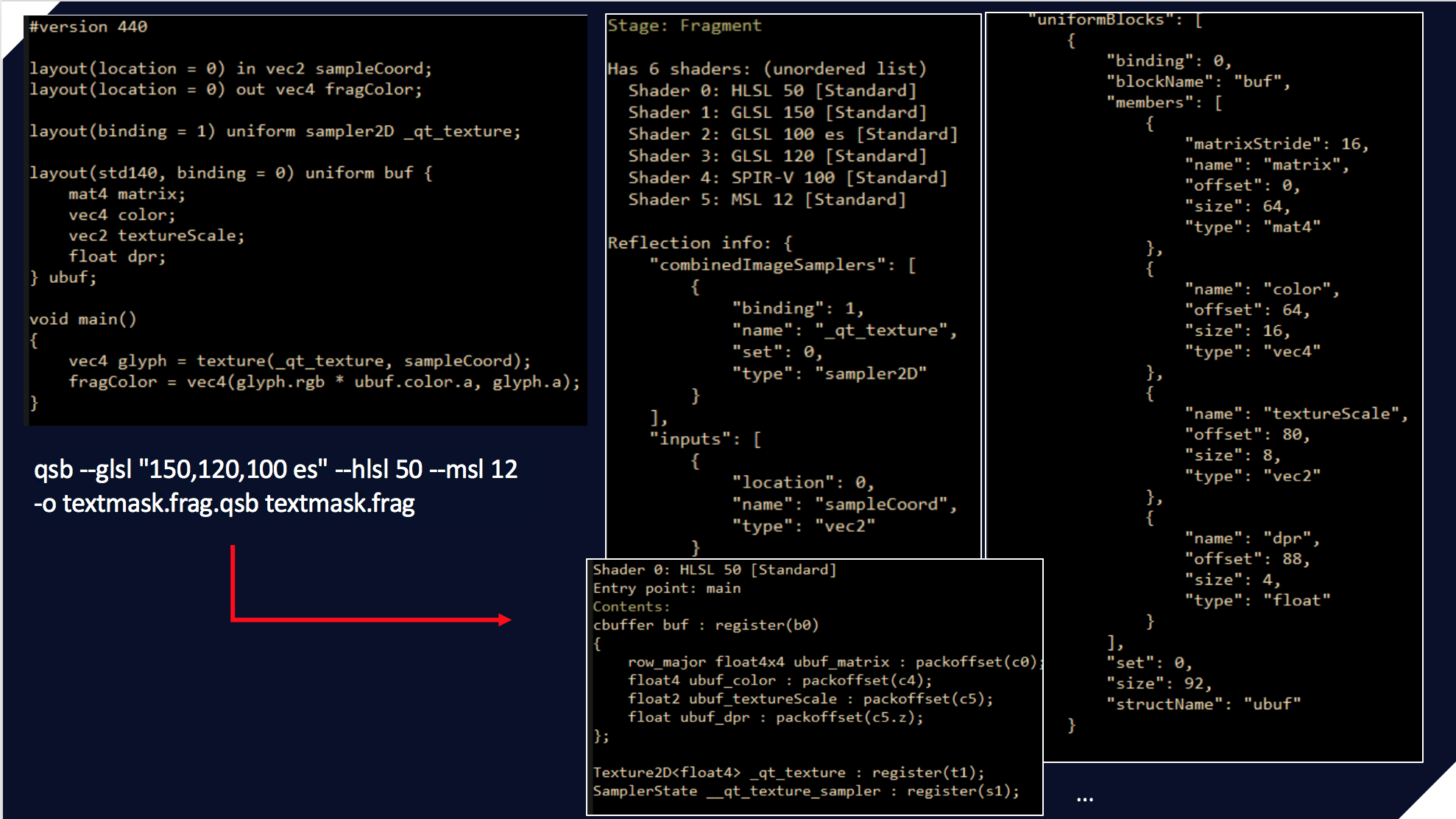
- Latest Blogs
-
Select Category
Categories
- qt-labs-chinese (120)
- Qt (68)
- qt-blogs-chinese (39)
- Qt Quick (27)
- qtearth-blogs-chinese (26)
- 嵌入式 (21)
- Qt Creator (20)
- qt-quarterly-chinese (20)
- Releases (17)
- Dev Loop (15)
- C++ (10)
- News (10)
- OpenGL (10)
- macOS (10)
- Biz Circuit (9)
- Qt Quick 2 (9)
- Windows (9)
- Contributors (8)
- Hot Topic (8)
- Performance (8)
- Announcements (6)
- Pinned (6)
- Artificial Intelligence AI (5)
- Biz Circuit & Dev Loop (5)
- Build system (5)
- Community (5)
- Cyber Resilience Act (CRA) (5)
- Cybersecurity (5)
- Graphics (5)
- KDE (5)
- Network (5)
- QML (5)
- Qt 5 (5)
- Qt 6 (5)
- Qt Design Studio (5)
- Symbian (5)
- WebKit (5)
- 3D (4)
- Android (4)
- Embedded (4)
- Generative AI (4)
- Labs (4)
- Open Governance (4)
- Qt Quick 3D (4)
- Qt Script (4)
- Qt for MCUs (4)
- Compilers (3)
- Cross platform (3)
- Design (3)
- Lighthouse (3)
- Linux (3)
- Maemo (3)
- Metal (3)
- Painting (3)
- Qt 6.8 (3)
- Qt Design Tools (3)
- Qt Simulator (3)
- S60 (3)
- UI/UX (3)
- UX (3)
- Vulkan (3)
- 工业车辆 (3)
- Accessibility (2)
- Automation (2)
- Automotive (2)
- Cloud (2)
- DS Pinned (2)
- Design Sphere (2)
- Desktop (2)
- Direct3D (2)
- Events (2)
- Figma (2)
- GammaRay (2)
- Graphics Dojo (2)
- HTTP (2)
- Internet (2)
- Layouts (2)
- PySide (2)
- Python (2)
- QPA (2)
- Qt 3D Studio (2)
- Qt Project (2)
- Qt for Automation (2)
- Qt for Python (2)
- Qt for WebAssembly (2)
- QtMobility (2)
- Roadmap (2)
- Security (2)
- UI Development (2)
- UI Tools (2)
- Web (2)
- 嵌入式开发 (2)
- 平台工程 (2)
- 软件开发 (2)
- Animated Vector Graphics (1)
- Axivion (1)
- Background (1)
- CMake (1)
- Clang (1)
- Clazy (1)
- Debugging (1)
- Development (1)
- Docker (1)
- Documentation (1)
- Enginio (1)
- Framework (1)
- Functional Safety (1)
- Git (1)
- HMI (1)
- HotSpot (1)
- IDE (1)
- IoT (1)
- Itemviews (1)
- KDAB (1)
- LTS (1)
- Lua (1)
- MQTT (1)
- Marketplace (1)
- Medical (1)
- MeeGo (1)
- Meet Qt (1)
- Mobile (1)
- Multimedia (1)
- MyScript (1)
- Optimization (1)
- Photoshop (1)
- Premium Support (1)
- Q&A (1)
- QBS (1)
- QLALR (1)
- QML Live (1)
- QNetworkAccessManager (1)
- Qt 3D (1)
- Qt 5.11 (1)
- Qt 5.15 (1)
- Qt 6.10 (1)
- Qt 6.9 (1)
- Qt Automotive Suite (1)
- Qt Bridge (1)
- Qt Framework (1)
- Qt Graphs (1)
- Qt Location (1)
- Qt Mobility (1)
- Qt Open source Licensing (1)
- Qt Quick Controls (1)
- Qt Safe Renderer (1)
- Qt Web Runtime (1)
- QtWebKit (1)
- RTOS (1)
- Raspberry Pi (1)
- Shiboken (1)
- Sketch (1)
- Software Development (1)
- Sponsership (1)
- Squish (1)
- Text and font handling (1)
- UI (1)
- UI Design (1)
- UI开发 (1)
- Virtual Keyboard (1)
- WebAssembly (1)
- WebGL (1)
- Websockets (1)
- Zephyr (1)
- Zephyr Project (1)
- apitrace (1)
- benchmark (1)
- business、Forrester、project management (1)
- container (1)
- demos (1)
- handwriting (1)
- httpserver (1)
- iOS (1)
- linguist (1)
- threaded (1)
- topic alias (1)
- 医疗 (1)
- 新版本 (1)
- 桌面端 (1)
- 用户界面 (1)
- 移动端 (1)
- 网络安全 (1)
- 设计 (1)
- 软件定义成像 (1)
- 软件质量 (1)
-
Select Month
Archives
- March 2011 (12)
- April 2013 (12)
- February 2011 (10)
- April 2011 (8)
- May 2013 (7)
- July 2013 (7)
- November 2024 (7)
- June 2013 (6)
- January 2025 (6)
- January 2011 (5)
- December 2018 (5)
- December 2010 (4)
- July 2012 (4)
- August 2011 (3)
- October 2011 (3)
- February 2012 (3)
- March 2012 (3)
- April 2012 (3)
- March 2013 (3)
- October 2013 (3)
- April 2018 (3)
- November 2018 (3)
- June 2019 (3)
- August 2019 (3)
- January 2020 (3)
- June 2020 (3)
- October 2024 (3)
- February 2025 (3)
- May 2025 (3)
- June 2025 (3)
- July 2025 (3)
- August 2025 (3)
- September 2013 (2)
- November 2013 (2)
- December 2013 (2)
- January 2019 (2)
- May 2019 (2)
- July 2019 (2)
- March 2020 (2)
- April 2020 (2)
- May 2020 (2)
- March 2025 (2)
- April 2025 (2)
- May 2011 (1)
- September 2011 (1)
- November 2011 (1)
- May 2012 (1)
- June 2012 (1)
- August 2012 (1)
- December 2012 (1)
- March 2014 (1)
- April 2014 (1)
- May 2014 (1)
- December 2014 (1)
- February 2015 (1)
- June 2018 (1)
- July 2018 (1)
- August 2018 (1)
- October 2018 (1)
- March 2019 (1)
- April 2019 (1)
- November 2019 (1)
- December 2019 (1)
- February 2020 (1)
- August 2024 (1)
- December 2024 (1)
- November 2025 (1)
-
Subscribe
Subscribe to Our Blog
Stay up to date with the latest marketing, sales and service tips and news.
Subscribe via Email
类型双关(type punning)与严格别名(strict aliasing)
原文链接:Thiago Macieira - Type-punning and strict-aliasing
几个月前,我在内部的讨论列表中发了一封长长的关于类型双关和破坏严格别名问题的电子邮件。当时,我唯一的目标是清理在使用GCC 4.5构建Qt 4.7过程中的所有警告。在那以后,GCC 4.6发布了,而被报告的缺陷QTBUG-19736涉及的正是我一直以来试图清理的代码。
随后,一个同事鼓励我在博客中贴出邮件内容来解释一下这个问题。下面便是本文要讨论的内容了(做了点更新):
GCC的警告内容如下:
"dereferencing type-punned pointer will break strict aliasing"
这是相当可怕的,因为它说,这将打破一些东西。那么,是说什么呢?
引用自http://cellperformance.beyond3d.com/articles/2006/06/understanding-strict-aliasing.html:
One pointer aliases another when they both point to the same memory location.
类型双关是这样一个技巧:通过其他类型来引用一个对象。而严格别名是C99的要求,一个对象只能通过它自己的类型或char类型来访问(见下面来自C99的准确定义)。这意味着以下代码是不能被接受的:
int i = 42;
short s = *(short*)&i;
上面的代码或许能工作(重点在或许),但其结果是未定义的。这意味着编译器可以自由地做任何事,比如给你的老板发送电子邮件报告这次违规(transgression)。但是,即使没有严格别名的规则,上述代码仍有不确定的行为,根据大小端的不同,它有两个可能的结果:0或42。
上面是一个对对齐要求不太严格的类型。而下列代码增强了这种需求:
short s[2] = { 0, 42 };
int i = *(int *)s;
有三种可能的结果:i == 0,i == 42或崩溃(加载的内容未4字节对齐)。
现在,当我们将严格别名规则和优化放到一块时,它将变得很有趣。标准允许编译器这样来假设,要解引用(dereference)的不同类型的指针绝对不会指向相同的内存区域(它们不会互为别名)。
这意味着下面的代码:
void *buf[4];
int *i = (int *) buf;
short *s = (short *) buf;
*i = 42;
s[0] = 0;
s[1] = 1;
printf("%dn", *i);
也是未定义的,因为你打破了这个规则。上述代码可以打印三种不同的东西(或者为你的冰箱除霜):
| 1 | (大端架构) |
| 65536 | (小端架构) |
| 42 |
之所以会打印出42,是因为编译器可以假定变量short *s绝对不会是int *i的别名。这意味着它知道*i == 42并可以将short优化掉。事实上,这正是GCC 4.5所做的,上面代码的反汇编也可印证这一点。
这对下面的代码也有效:
union {
int i;
short s;
} u;
u.i = 42;
u.s = 1;
printf("%dn", u.i);
根据C标准,上述行为是未定义的。尽管如此,它仍被GCC所接受(在x86上输出1)——但是不被其他编译器所接受(译者注:我在MSVC/CLANG/SUN CC等编译器下测试结果也是1)。我建议你看看这个案例c1b067ea8169e1d37e2a120334406f1f115298bb。QMutexLocker 中有:
union {
QMutex *mtx;
quintptr val;
};
而后我们做了:
if ((val & quintptr(1u)) == quintptr(1u)) {
val &= ~quintptr(1u);
mtx->unlock();
}
该代码可以读为“如果该指针地址的最低位被置位,清除该位并调用mtx->unlock()”。但是,它打破了严格别名规则,而且Sun CC生成了坏的——但是完全合法的——代码,在最低位被置位的情况下调用了QMutex::unlock()。当然了,代码会导致崩溃。
一个更困难的案例是2c1b11f2192fd48da01a1093a7cb4a848de43c8a (任务247708,不好意思,没有导入到新的缺陷追踪系统中),影响了QDataStream的字节交换代码。它是:
QDataStream &QDataStream::operator>>(qint16 &i)
{
...
register uchar *p = (uchar *)(&i);
char b[2];
if (dev->read(b, 2) == 2) {
*p++ = b[1];
*p = b[0];
...
看起来很安全,对吧?恩,其实不然,而且有一段时间我都不敢确认这不是编译器的缺陷。实际上是这样的,由于链接时代码生成(Link Time Code Generation),MSVC内联了上面的operator>>并移除了真正设置变量qint16的代码。看后面C99中的定义来理解为什么我不敢确认。
无论如何,这个问题是,当编译器按照严格别名规则进行优化后,会导致不可预知的结果。我们来看看下面这篇博客中的例子:
http://jeffreystedfast.blogspot.com/2010/01/weird-bugs-due-to-gcc-44-and-strict.html
作者编写了他认为有效并且已经正常工作了很长时间的代码。但GCC升级到4.4后打破了代码(有效性),这是因为它打破了严格别名规则。代码行
tail = (Node *) &list;
创建了类型双关的变量,而它的解引用
tail->next = node;
属于违例。
你可能会问,为什么会有这个规则存在。好吧,其原因是,该规则对于编译器优化特别有用,因为它给于编译器一些在其他情况下所没有的自由。看一下博客每一个C程序员应该了解的未定义行为第一部分的例子:
float *P;
void zero_array() {
int i;
for (i = 0; i < 10000; ++i)
P[i] = 0.0f;
}
该博客的作者告诉你
该规则允许clang将该函数[...]优化为"memset(P, 0, 40000)"
而若没有这种自由的话
Clang必须将该循环编译成10000次4字节的赋值(将会慢若干倍)
稍进一步,在第3部分,作者解释了为何会如此。所以,考虑一下:如果没有严格别名,编译器为什么必须进行10000次4字节存储操作而不是一个简单的40000字节的memset?你先考虑着这个问题,这是第2部分的链接。
原因在于,当为每一个P[i](浮点类型)赋值时,编译器不能假设P(指针类型)会保持不变。有些人可能会编写这样的代码:
int main() {
P = (float*)&P;
zero_array();
}
在这种情况下,对P[0]赋值会改变P的值,因此,下次操作(为P[1]赋值)时必须按不同地址计算。
通过小心地编码,使用类型双关而不打破严格别名规则也是可能的。但是,这很难实现,而且也很难不让编译器陷入混乱。经验法则是:如果你使用类型双关(也就是,通过C风格的转换或reinterpret_cast转换成另一类型的指针),你应该再思量一下。如果你使用类型双关并解引用,需再三思量。
C99 6.5 7:
An object shall have its stored value accessed only by an lvalue expression that has one of the following types:
— a type compatible with the effective type of the object,
— a qualified version of a type compatible with the effective type of the object,
— a type that is the signed or unsigned type corresponding to the effective type of the object,
— a type that is the signed or unsigned type corresponding to a qualified version of the effective type of the object,
— an aggregate or union type that includes one of the aforementioned types among its members (including, recursively, a member of a subaggregate or contained union), or
— a character type.
Subscribe to Our Blog
Stay up to date with the latest marketing, sales and service tips and news.
I want the latest in...
Try Qt 6.0 Now!
Download the latest release here: www.qt.io/download.
Qt 6 was created to be the productivity platform for the future, with next-gen 2D & 3D UX and limitless scalability.
Visit the Qt Resource Center
Find webinars, use cases, tutorials, videos & more at resources.qt.io
We're Hiring
Check out all our open positions here and follow us on Instagram to see what it's like to be #QtPeople.
Näytä tämä julkaisu Instagramissa.Henkilön Qt (@theqtcompany) jakama julkaisu

